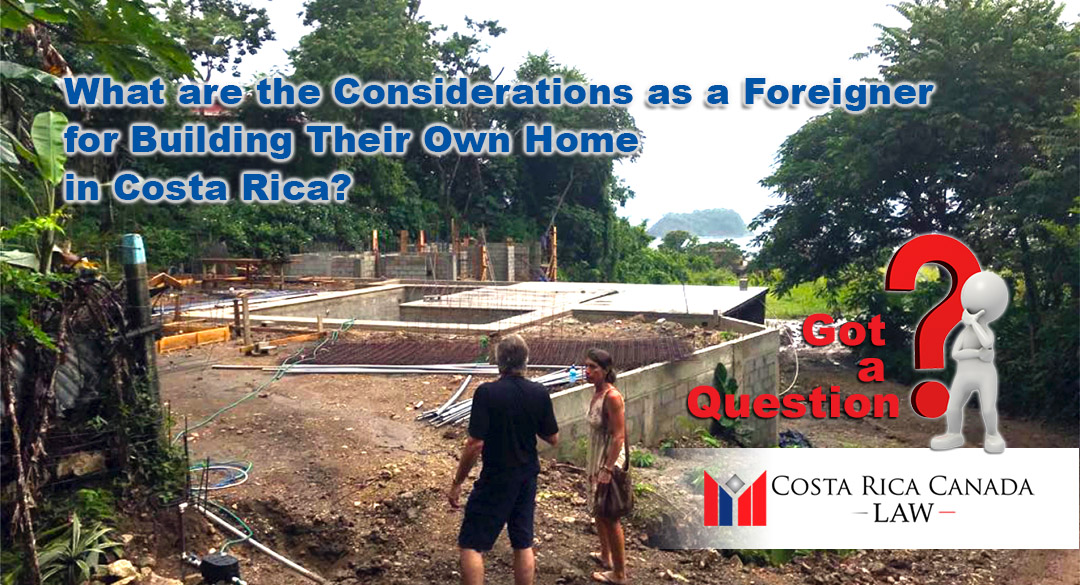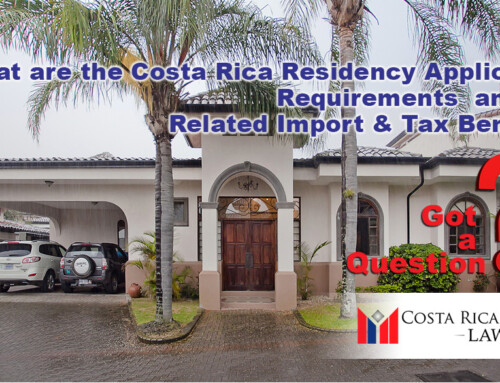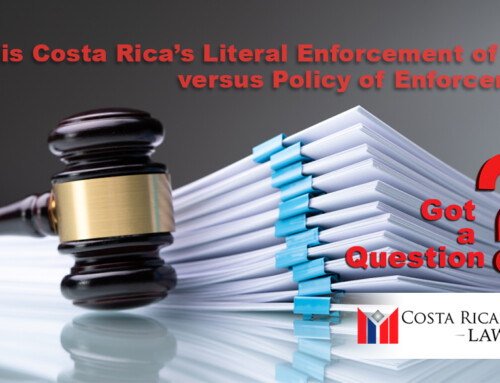As a foreigner, constructing your own home in Costa Rica will present some unique challenges. First and foremost, if you are coming from the United States or Canada and don’t speak fluent Spanish, the issue of language will be paramount. You won’t be able to bring your own English speaking Contractor and construction crew from your home country, as they would not have the legal immigration status to be able to work in Costa Rica. After having purchased a building lot, selecting an Architect and a Building Contractor, with whom you can freely converse, will be your initial challenge. You can be sure that the actual construction workers who build your home, will speak little, if any, English.
Selecting an Architect and a Building Contractor
Most likely, you will want to select an Architect and a Building Contractor who are familiar with North American designed homes. In short, homes that would be described as “open floor plan”, rather than traditional Costa Rica style homes, which tend to employ more “boxy-style” construction, with individual rooms accessed by hallways. This Costa Rica style construction is trending toward the North American style over time, but is still in a state of transition.
There are various ways that you can encounter the correct Architect and Building Contractor for you, such as a Google search, or a referral from a Realtor. However, references from satisfied customers and a visual inspection by you of previously completed projects by each of these professionals, is a must.
The Building Permit Process
In order to start the building process, the services of an Architect, who is a member of the Costa Rica College of Engineers and Architects, must at least be employed to certify the Building Plans that are submitted to the Municipality, in order to obtain a Building Permit. The Architect can, of course, draft the Building Plans and can also be retained by the Owner, to undertake the supervision of the construction process. The Building Plans must be in-keeping with the Municipal Land Use Permit (Uso De Suelo), which sets-out the zoning requirements to be met for the property to be built on. Additional documentation submitted for the Building Permit will include legal documentation supporting ownership, a land survey of the property to be built on, a Water Letter from the applicable Water Authority that will supply potable water to the property, and such other information and documentation that the Municipality may specify, given the particular circumstances of the building site. In order to protect the property owner from liability claims, all on-site construction workers must be covered by a Workers’ Compensation Insurance Policy, issued by the Government Insurance Company INS, to cover any injuries that may be suffered by them on the construction site during the building process.
Paying The Architect And The Building Contractor
The question that must be answered is, how can the Architect/Builder’s and the Owner’s monies be protected in the payment to the Architect/Building Contractor for a home yet to be built? The answer is, all of the building construction monies, including any deposit amount agreed to be paid by the Owner to the Architect/Building Contractor under the Building Contract, must first be placed in an escrow account of a Government Registered Escrow Company, pursuant to the provisions of an Escrow Agreement entered into by the Owner, the Architect, the Building Contractor, and the Escrow Company.
This Escrow Agreement will govern the dispersal of construction monies to the Architect and the Building Contractor, as various construction milestones are completed in the project. Before any good faith deposit amount is released from escrow in favour of the Architect and the Building Contractor, the Owner must have conducted and be satisfied with the legal due diligence for the project in accordance with the terms of the Building Contract. Subsequent monies dispersed from escrow in favour of the Architect and the Building Contractor, will only be made when a specific construction milestone, such as laying the foundation or erecting the walls, have been certified by an independent Engineer or Architect, as having been met in both compliance with the Building Plans and the quality of the materials agreed to be used in the construction process.
By proceeding in that manner, the Owner will be protected for the construction value completed. The usual hold-back for the final payment of the construction monies to the Architect and the Building Contractor is between five percent (5%) and ten percent (10%) of the total Building Contract price, until any irregularities found by the Owner, specified on what is commonly referred to as a “punch-list”, are corrected within the agreed upon time limits by the Architect and the Building Contractor. If you are purchasing a residential home from a Builder/Developer, or having a home custom built, the Costa Rica Civil Code in Article 1185, provides you with a Statutory Guaranty of five years from the date of delivery, for defects in materials and workmanship, attributable to the Architect or the Builder. This Guaranty cannot be legally waived by a Purchaser.
My Opinion
For foreign owners coming from particularly the U.S. and Canada, significant differences exist in the social sense, for doing business in Costa Rica. The solvency of Builders has become an issue of late, with many property owners making sizeable deposits to Builders in advance of construction, who then abscond with the deposit monies. Should this circumstance arise, no practical and affordable legal recourse for the return of the deposit monies to the owner exists. In particular, I would advise owners to be wary of smaller Building Contractors, who make unusually low bids for their work and seek an unsecured deposit. Taking into account all aspects of this statement, my clear advice is that you plan to be present in Costa Rica during the home construction process and regularly visit the construction site while the construction work is underway. This due diligence is, in my opinion, indispensable.






